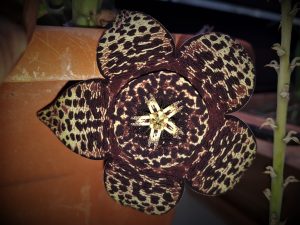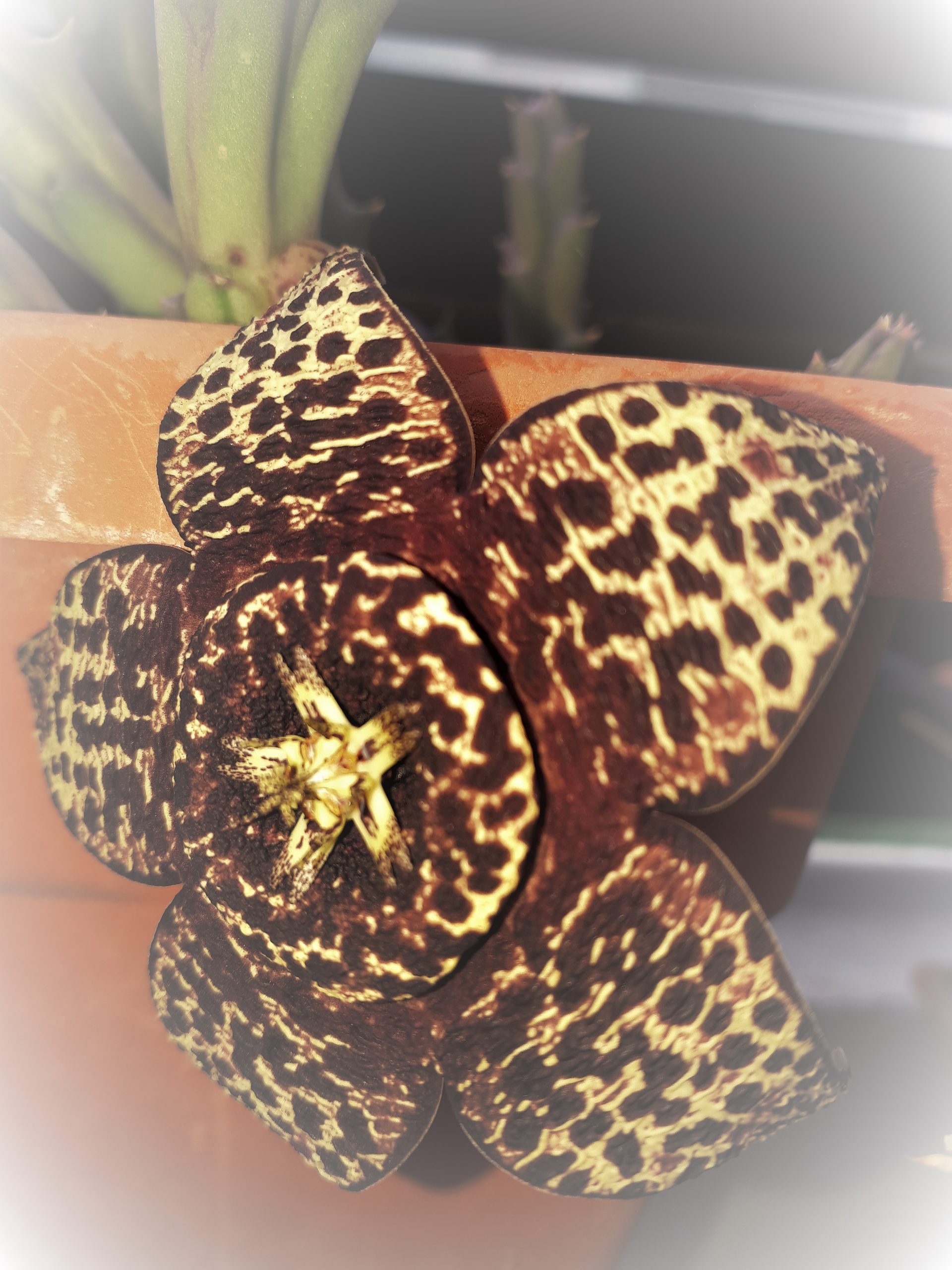 This flower bloomed for us around the time of Venus’ re-entry into Scorpio and shortly after her inferior conjunction with the Sun.
This flower bloomed for us around the time of Venus’ re-entry into Scorpio and shortly after her inferior conjunction with the Sun.
It belongs to an unsightly succulent that I was given to repot for a friend and ended up keeping as it was not deemed attractive or needed. After repotting it almost died. It looked so bad that I often thought about just removing it. But luckily, I feel bad killing a plant that may still have a chance of surviving and I just let it be. Over time it sprouted some new tentacles that were green and healthy. It still wasn’t very attractive but it was clearly recovering and was therefore not a candidate for culling under any circumstances (though I did plan on giving it away…).
I had neglected my yard. Rains started and my succulents did not need attention and I had been so busy that I hadn’t actually been out there for weeks.
This morning I went out to get something and, out of the corner of my eye, noted something was out of place. Something that was not there before. I walked over and…there she was: Venus in Scorpio…in the flesh so to speak. It took me a few moments to make the connection: 5 petals and in between them another 5 pointed star.
A star. Venus.
“When plotted geocentrically – from an Earth-centered perspective – there is a highly noticeable rhythm in the motion of Venus. After 8 years, it returns to the same place in the sky on the same date. This was known to, and of great interest to, ancient peoples such as the Maya, and many today know it as the famous Venus cycle, or the pentagram of Venus.
Over eight years, each phenomenon – each relative position of Earth, Venus, and the sun – occurs five times, and then over the next eight years they repeat five times almost identically.
For Venus, the tight inward loops are the inferior conjunctions, in which Venus passes between us and the sun; the wide swings are centered on the superior conjunctions, when Venus passes around the far side of the sun. So the general pattern is (as Anthony Barreiro commented):… a lovely five-petalled rose.” – https://earthsky.org/astronomy…/five-petals-of-venus
The flower is rough, fleshy, dark, mysterious and somewhat sinister looking. At the same time I find it captivating, magnetic and incredibly beautiful. It stands out from the usual softness of succulent blooms. There is nothing tender about this one. Nothing silky-soft. Nothing pink you know 🙂
I have had this plant for 2 years. This is the first time it bloomed – I didn’t even know it blooms. And it does…and it did…right on time.
The plant, as I now find out goes by the Latin name Orbea variegata. It is also known as the star flower, starfish plant, starfish cactus, carrion cactus, carrion flower, toad cactus, toad plant…
“Orbea variegata is a species of flowering plant in the dogbane family Apocynaceae, known as the star flower. It is native to the coastal belt of the Western Cape, South Africa, growing actively during the winter rainfall season” – Wikipedia
The fact that it is also known as a ‘Carrion flower’ (Carrion – the decaying flesh of dead animals) prompted me to explore why:
“The carrion-like smell of the flowers attracts flies and other insects for pollination” (http://www.llifle.com/Encyclopedia/SUCCULENTS/Family/Asclepiadaceae/19769/Stapelia_variegata)
🙂 Brilliant! Life that smells like death…and the lines between life and death blur in the oddest of ways! Nature is so inventive. And this is so dark: just like Scorpio. The plant even has stingers. Priceless.
Needless to say that this, previously overlooked and merely tolerated, guest in my yard now receives one of the top spots and has earned my full appreciation and devotion.
No wonder the plant is so plain itself – all her power goes into creating this spectacular show. Her thorny surface keeps predators away and only those prepared to give her space and time get to see her when she finally emerges from within. She keeps her secrets until the time is right. And when she finally expresses her nature it is impossible to not notice.
This plant reminds me to look closer and deeper because things are not always what they seem to be. Underneath appearances lies the essence – someone’s true nature and reason for being. A desire to be seen and appreciated for what they hold inside. The dark, mysterious and hidden parts.
Venus in Scorpio touches these depths. Look around you, reflections are everywhere.
Enjoy exploring…in fact: never stop exploring.

Orbea Variegata / the ‘carrion flower’ exudes the scent of death in order to attract and perpetuate life.




Comments are closed